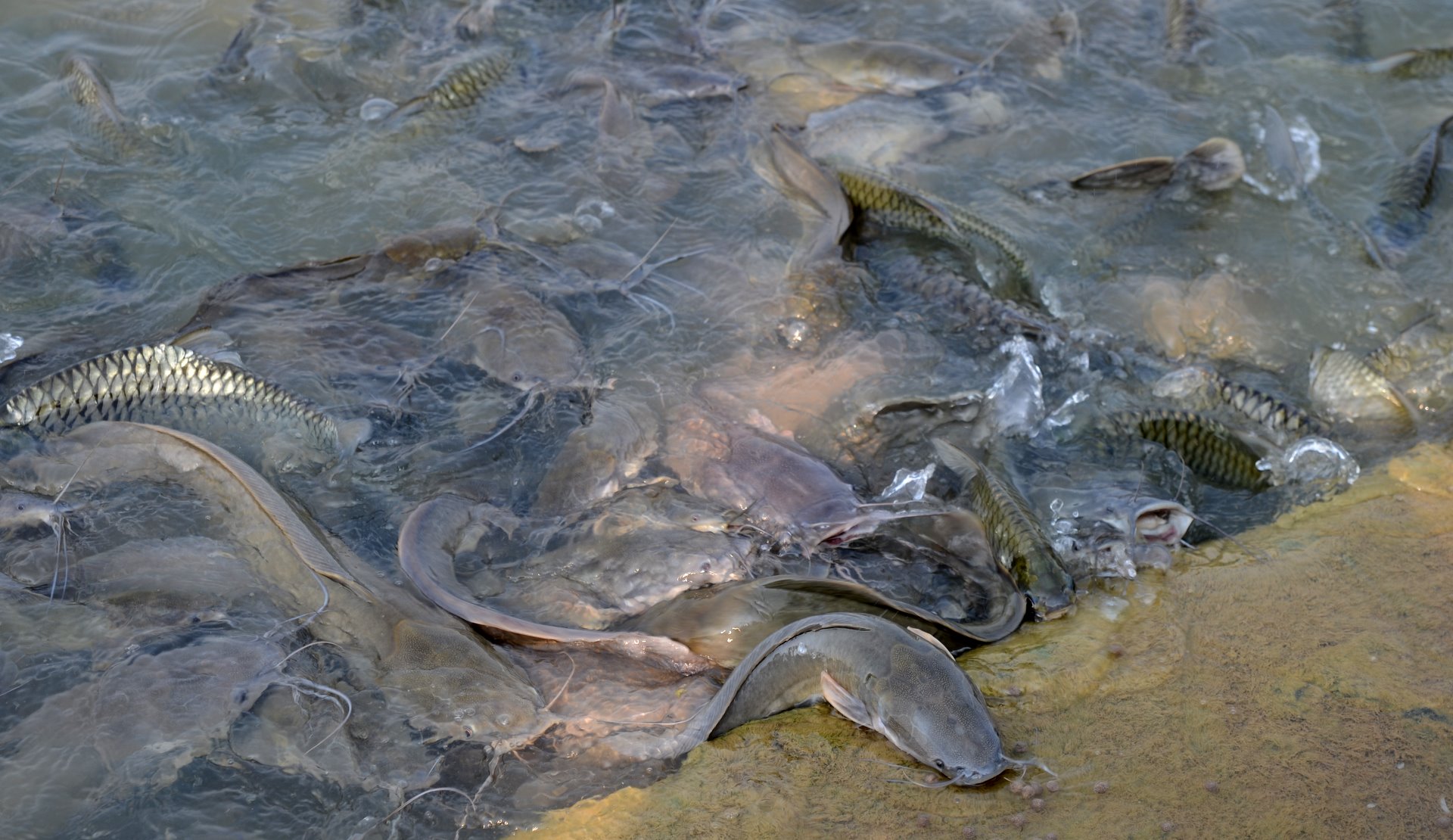Fish out of water
Air-breathing fish do exist — and they use a remarkable respiratory system to survive on land
Chelsea Harvey • August 4, 2014

Air-breathing catfish, of the family Clariidae. Next step: world domination. [Image credit: Wikimedia Commons user Takeaway]
All animals need oxygen. Mammals breathe it out of the air, and fish breathe it in the water — this is the truth we are taught in grade school and the cause of death for many unfortunate childhood goldfish. But as it turns out, the rule doesn’t always hold up. Throughout many millennia, a number of remarkable fish have evolved different ways to survive both in and out of water.
The air-breathing catfish – part of the Clariidae family of fish native to Asia and Africa – is one of these lucky fellows, capable of surviving on land for hours or even days. It’s a useful ability in arid parts of the world where habitats may dry up and force catfish to wriggle their way to another pool of water (one species is so good at flopping itself from place to place that it’s earned the nickname “walking catfish”). The key to its amazing ability lies in a specialized respiratory system that functions both in and out of water.
Like all fish, air-breathing catfish have gills — specialized breathing structures that allow these aquatic organisms to breathe underwater. Gills are flaps of tissue packed full of capillaries, the blood vessels that allow oxygen transfer in animals. As the fish swim about, water passes over their gills and comes into contact with the capillaries, which pull oxygen out of the water and into the bloodstream. The problem is that gills only work in water — without a thick fluid to keep them upright, the thin tissue flaps collapse. Air-breathing catfish, however, have evolved a solution.
Inside an air-breathing catfish, just above both gills, is a set of hollow cavities that contain the fish’s air-breathing organs — a set of branched, almost tree-like structures full of blood vessels. Most of the time, these hollow chambers are closed off by a row of filaments, or strands of tissue — almost like dominos stacked tightly together in a line — protecting them from water while the fish is using its gills. However, all of this changes when the catfish is forced to breathe air.
If the catfish finds itself flopping out of water, it opens its mouth wide and takes a big gulp of air. The act of gulping uses muscles in the catfish’s throat that cause the gills to close. Meanwhile, these same muscles force the protective filaments around the air-breathing organs to separate, creating a narrow slit through which air can pass. As the fish gulps, air is forced down its throat, through this slit and into the chamber, where it comes in contact with the air-breathing organs — and all the blood vessels. Just like in the gills, these blood vessels allow oxygen to diffuse into the bloodstream, which carries it along to other parts of the fish’s body.
When the fish closes its mouth, the gills open back up and the slit in the protective filaments closes. At the same time, the muscles that open the gills cause a different slit to briefly open in the back of the chamber, allowing the now-useless air to rush back out of the chamber. The whole process happens in a matter of seconds, but with enough gulping, air-breathing catfish are able to sustain themselves, at least for a while, on land.
Unfortunately, it’s not a perfect solution: Air-breathing catfish can only survive out of water as long as their skin stays moist, so it’s important for them to get back in the water again as soon as possible. Still, their amazing biology is testimony to the fact that it’s not always so bad to be a fish out of water.
7 Comments
Really interesting, thanks for explaining in such a way, that us ol country boys, can umderstand.
Is there any evidence that there were ever catfish of this species that did not have both gills and lungs? I actuallay was searching to see if walking catfish has remnants of gills. Glad for your explanation that they have gills they still use!! “air breathing catfish” as the walkers are so often called does not indicate that the fish have both capabilities.
Thank you for the explanation.
please sir how many times do cat fish breath in 1 minute?
Thanks for the explanation but how many times doe’s catfish’s breathe in a minute.
That’s true how many times does catfish breath in a minute and how fast are they in a minute
Very good explanation